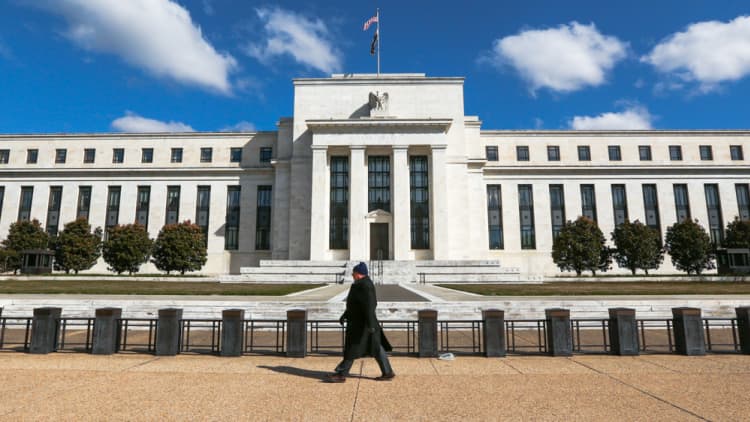The Fed is about to embark on a rate cutting cycle that could stoke asset bubbles, forcing it to later cut interest rates back to zero or even negative levels in the future, according to Scott Minerd, global CIO at Guggeheim.
Minerd expects the Fed to cut interest rates by a quarter point Wednesday, but he says the economy is much more in need of better fiscal policy than easier monetary policy. Fiscal policy is not addressing income inequality and other structural issues that are constraining out put and depressing prices.
"The Federal Reserve at the end of the day is combating recession. The only thing it can possibly do is inflate an asset bubble that ultimately is going to unwind and create a problem that is bigger than the one they face today," said Minerd in a phone interview with CNBC.

"Monetary policy is not going to address the ills in the economy which are more supply-side related. Whether we go straight into a recession from here or the Fed manages to reflate the economy...we're going to end up in the same place. Maybe it can buy some time but the mop up period, if we have a period of accommodation, would be worse than if we went into recession right now," he said.
Minerd said he believes the Fed should cut rates but make it clear that it is just a preventative measure. In a Barron's op-ed this past weekend, he said that normally, by almost every measure, the Fed should be considering a rate hike, not a rate cut, in anticipation of "potential economic overheating from looming limitations on output."
The Fed has made a case, however, for a pre-emptive rate cut and the market widely expects a 25 basis point cut. Some economists see the potential for a cut of 50 basis points, and more rate cuts beyond that.
1998 comparison
"I would argue they should go ahead and cut rates. They should hem in the expectation for more rate cuts. I think they should say 'we will adjust policy appropriately,'" he said "Future policy actions will be driven based upon data dependency which is consistent with what they always did. I would definitely advertise this as an insurance rate cut. It's clearly not supportable based upon the data. This is completely anticipatory based upon uncertainties around the trade war, slowing growth in Europe. They're attempting to get ahead of it...They are going for broke."
Minerd said if the Fed does get inflation up to 2.5%, it would reverse policy and start hiking. The Fed's inflation target is 2% and it has been frustratingly low, at levels below that.
But the risks are like those in 1998, when the Fed cut rates to fight the Asian financial crisis, reversing its move less than a year later. In the process, the Fed helped drive the tech bubble which burst in 2000.
"I think ultimately we're going to end up back at the zero bound in either scenario," Minerd added. "Ultimately we're going to go to negative interest rates. I think that's what the Fed would like to avoid by trying to take a preemptive action, but the structural forces inside the economy, like demographics and the negative interest rates in Japan and Europe, are going to put such downward pressure on rates. Ultimately the Fed will end up doing quantitative easing again."


